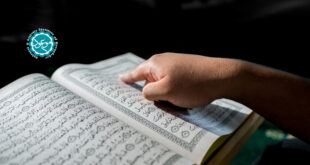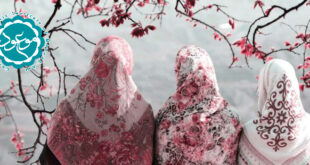Philosophy of Hijab
As previously stated, one of the certain commandments of Islam is the necessity of covering. However, an important question is, ‘What is the philosophy of Hijab? Why has Islam thus taken away the freedom of women? And, is not this an injustice?’
In reply, it must be said that the object of Islam in legislating Hijab is fortifying the holy foundations of family, preventing sexual deviations and their detrimental consequences, ensuring social health and security, facilitating the cleansing of the social environment, and decreasing moral corruption. Moreover, not only is this amount of limitation not disadvantageous to women, it is in the overall interests of women, their children, husbands, and all members of the society.
In order to clarify this issue, I shall state several premises.
First Point
We must bear in mind that women and men are two pillars of the society, and that individual welfare, tranquility, and comfort is greatly based upon the health, security, and purity of our living environment. Thus, assuring the health, security, and purification of the environment from corruption is our mutual responsibility and we must cooperate and work together to attain these goals.
Second Point
Women are delicate and exquisite creatures and are naturally fond of make-up, adornments, beauty, flaunting, ostentation, and charming others. They wish to take over the hearts of men with their allure; however, men crave variety and are very weak against their sexual desires. Their sexual desires are easily excited and they eventually lose control. When these unruly and rebellious desires are aroused, even reason, law, and religion are generally useless in harnessing them.
Everything about women is arousing to men—especially young men: their adornments, their pretty clothes, their delicate voices, their allure and coyness, their bodies, hair, and even the warmth of their bodies can kindle this wild instinct.
Third Point
There are many men in the society that cannot marry due to poverty, unemployment, low income, continuing education, military service, and a large number of other reasons. The tally of these individuals, who are at the juncture of adulthood and the outburst of sexual instincts, is rather high. The regretful situation of these people who are part of the society cannot be disregarded.
Considering the previous points, the following question arises: What is in the best interests of women—uninhibitedness and absolute freedom in dress and behavior or observing Hijab and enduring some restrictions?”
In order to arrive at a correct answer, it is better that we consider two hypothetical communities and compare their pros and cons.
Community A
In this community, women have complete freedom regarding their apparel and their association with men. In order to satisfy their natural tendencies, they are flamboyant and gaudy, they leave their homes made-up, half-bare, and with beautiful, colorful, and voguish clothes. With absolute liberty, they socialize and consort with all sorts of men in public places.
They ravish the hearts of every male, intentionally, and unintentionally, with their scanty clothes, their beauty, and their allure and wherever they go, they drag behind themselves a caravan of hearts. Those that are not married inhabit cinemas, cabarets, dance parties, parks, and the streets until midnight hours in complete freedom. Furthermore, those who are married go wherever they want with or without their spouses with the excuse of freedom as their right.
In this community, boys and girls are free to associate with one another, become close friends, and even have sexual relationships. Men are also completely free to consort with women as they please. They can have relations with any willing woman or anyone they are able. Together they can go to theatres, nightclubs, parties, wander the streets and places of ill repute, and indulge in all sorts of debauchery.
The women of such communities are free in adornment, degeneracy, exiting their homes, associating with any men, and having sexual relations; however, these freedoms come with a price and have the following consequences:
Instability of the sacred foundations of family; indifference of men and women toward the home and family; suspicion of spouses towards one other and trying to police one another; family conflicts; abundance of illegitimate or vagrant children with no guardians; accruement of mental illnesses; increase of murder, crime, and suicide; escalation of the number of unmarried women and men; postponement of the age of marriage; indifference of young men and women toward establishing families; inclination of youths toward various moral corruptions and sexual deviations; upsurge of divorce statistics; and superabundance of men and women who must inevitably live alone and suffer loneliness.
Cases of such societies with disrupted families are evident in the West. Put aside raw emotions and thoroughly contemplate the matter. Is such a community truly in the interests of women, men, youths?
Community B
In this society, women have an active role on the stage of life. They occupy suitable jobs with necessary facilities and in this way perform their duties to the society. Like men, women have a great presence in schools, colleges, universities, research centers, hospitals, clinics, laboratories, legislative offices, government departments, and other important and suitable offices. They completely observe Hijab and covering—except their hands and faces. They do not apply make-up and adornments before entering public places and their place of work. They leave their homes covered, plain, and without cosmetics and they make their adornments, cosmetics, and allure exclusive to their husbands and use them in the privacy of their own home.
They accept these restrictions selflessly and in good will in order that the environment is free of deviation and corruption. They do this with regard to the state of youths and men who do not have the power to marry. They observe Hijab so that men do not become indifferent towards their own wives due to seeing the beauties of other women, and so that these men do not turn their hearty families into a scene of a battlefield with excuses and quarrels.
They accept this limitation so that young men and women—who are the children of these same women—are safe from corruption, sexual deviations, and mental illnesses; and so they may marry and establish a family at a suitable time and with the availability of necessary resources and facilities.
They accept this limitation to help fortify the foundations of family—a thing of which they are also a part—and thus reduce the tally of divorce, living single, and distressed and guardianless children.
In this community, most families have good interrelations, the relationships of spouses are relatively genial, and there are fewer disputes. Moral corruption and sexual deviations are comparatively low among youths. Young men and women are interested in marriage and establishing the holy institution of family. The amount of divorces and single men and women is not high. There are fewer vagrant youths and children without guardians.
In this society, parents feel more assured of the purity of their children from immorality, sexual divergence, and mental disorders.
Is living in such a community in the better interests of women or the first? Any thoughtful person would regard the second community superior.
Islam also regards living in the second community better and healthier. This is why it has legislated Hijab and has asked women to observe it and cover their adornments and beauties from non-mahram men.22

 Mouood Mouood English Edition
Mouood Mouood English Edition



